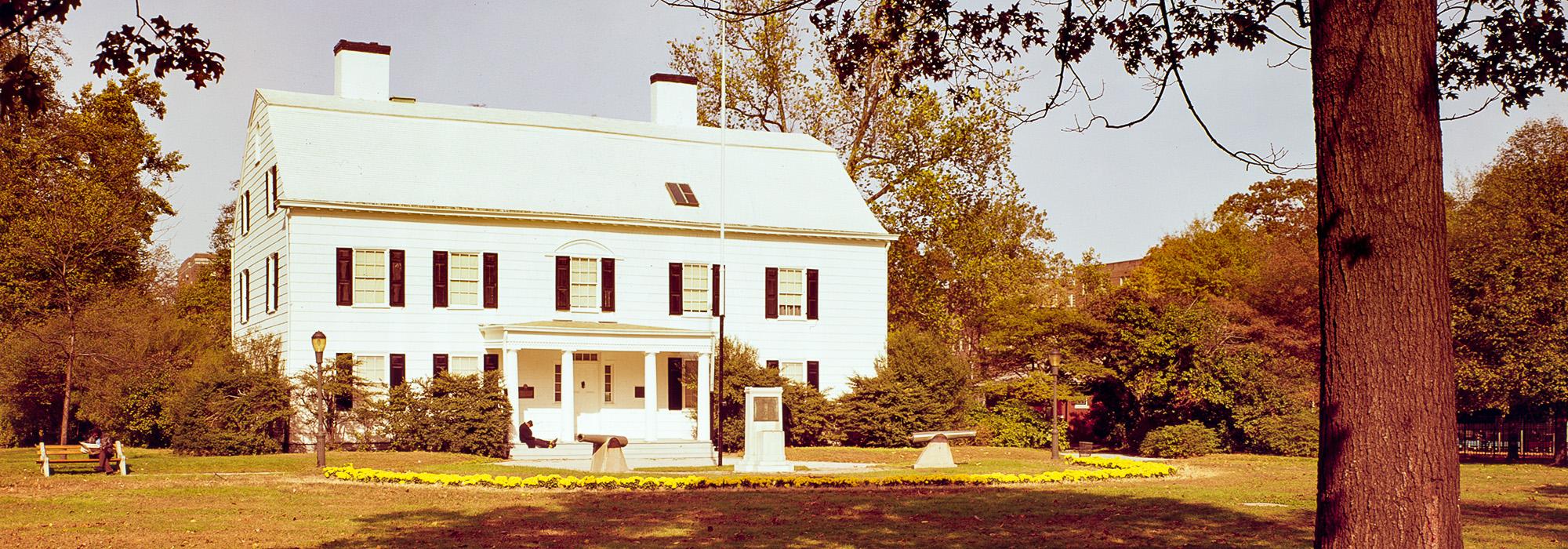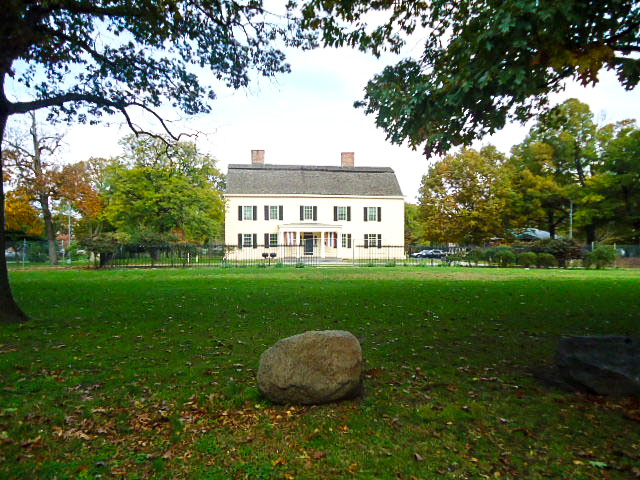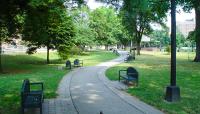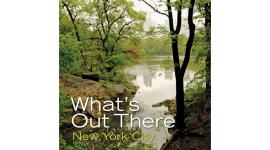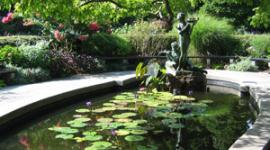Landscape Information
This 11.5-acre park once formed part of the estate of lawyer, statesman, and gentleman farmer Rufus King, who purchased the farmhouse and 90-acre farm in 1805. Influenced by his time in England, King was among the first to bring Picturesque design principles to an estate landscape in the northeastern United States. His work included constructing a semicircular front drive, surrounding the property with a belt of trees, and planting oaks around the mansion, some of which remain. The estate was a working farm, transitioning from the use of enslaved labor to free labor during King’s tenure and serving as a laboratory for agricultural experimentation and a source of commercial profit. The mansion and its remaining eleven acres were purchased by the Village of Jamaica in 1896, and then transferred to the New York City Department of Parks when Jamaica was absorbed by the City in 1898. Immediate improvements included repairing the mansion, laying sidewalks, planting trees and shrubs, and installing fencing. In 1915 a bandstand was constructed at the center of the park, and the three-acre hockey field was graded and sodded to enable tennis to be played in the spring and summer and field hockey in the fall. From 1991 to 1993 the bandstand was relocated to the west side of the park, and new paths, fencing, and benches were introduced. During this time recreational facilities were redistributed, and in 1997, a steel picket fence was installed around the house.
Under the care of the King Manor Association of Long Island, Inc., the mansion has been operated as a historic house museum since 1900. The site was listed in the National Register of Historic Places and designated a National Historic Landmark in 1974.



